
Amaretti are a great classic of Italian pastry making. Widespread from north to south in many different variations, they can be soft and with a consistency similar to that of marzipan, like the Ligurian ones from Sassello, with a whole almond in the center and sprinkled with granulated sugar, like the Sardinian pastries, or small and with a crunchy and crumbly consistency, like those from Piedmont and Saronno. We were inspired by the latter, and we prepared them with peeled and bitter almonds, which will give the biscuits the characteristic pleasantly bitter aftertaste from which, in fact, the name amaretti comes.
Once you have blended the almonds with the granulated sugar and reduced them to flour, just mix everything in a bowl with the egg whites and a pinch of ammonia, pour the mixture obtained, after a short rest in the fridge, into a piping bag, and form many balls the size of a walnut on a baking tray, to sprinkle with powdered sugar and put in the oven. This way you will obtain delicious dry biscuits, fragrant and with the typical rounded shape, perfect to serve as a sweet end to a meal, combined with a glass of passito, enjoy as a snack with a cup of tea or coffee, or use as a base to make cakes, tarts and semifreddo.
What are Amaretti Cookies?
Amaretti cookies, originating from Italy, have a history deeply rooted in Italian culinary tradition, particularly associated with the regions of Lombardy and Piedmont. Their name, derived from "amaro," meaning "bitter" in Italian, hints at the cookies' unique flavor, which comes from a blend of sweet and bitter almonds. Legend has it that amaretti were created in the 18th century when a young couple in Saronno welcomed a visiting cardinal with these quickly made almond-based cookies. The recipe spread throughout Italy and beyond, with each region adding its own twist—some opting for a softer, chewy texture, while others prefer a crispier version. Today, amaretti cookies are a beloved treat worldwide, enjoyed on their own or used to add flavor and texture in various desserts.
Pro Tips for The Best Amaretti Cookies
- Use fresh, high-quality almonds to get a rich, authentic flavor.
- Ensure no yolk gets mixed in, as this can affect the cookie’s texture.
- For airy cookies, whip the whites until they form stiff peaks before folding in other ingredients.
- Carefully fold the almond flour and sugar into the whipped egg whites to keep the mixture light and airy.
- Line your baking sheet with parchment to prevent sticking and help with even baking.
- Amaretti spread slightly while baking, so leave enough space between each cookie.
- Amaretti can overbake quickly, so remove them once they are lightly golden to keep them soft on the inside.
Can I Use Ready-Made Almond Flour?
Yes, almond flour can be used instead of fresh almonds in this recipe. Using almond flour simplifies the process and still gives amaretti cookies their classic almond flavor and texture. Just be sure to choose fine almond flour for the best, smooth consistency in the cookies.
Can I Skip the Bitter Almonds?
The bitter almonds are essential for the success of the recipe: also known as armelline in Italy, they are obtained from the pit of peaches and apricots, and are widely used in pastry making as an additional ingredient for the preparation of desserts, liqueurs and syrups. If you can't find them, you can replace them with an equal amount of peeled ones, taking care to add a few drops of natural bitter almond extract to the mixture.
Can I Add Anything Else to These Cookies?
You could add a hint of vanilla or almond extract for extra depth of flavor. Some variations also include a sprinkle of powdered sugar on top for a delicate, sweet finish, or dip the bottoms in melted chocolate for a richer treat. Just keep additions light to maintain the traditional almond essence.
Can I Omit The Eggs?
Eggs are essential in traditional amaretti cookies, as they bind the ingredients and create the light, airy texture. Omitting eggs would significantly change the cookies’ structure and consistency. However, for an egg-free version, you could try an egg substitute like aquafaba (the liquid from canned chickpeas), which can be whipped similarly to egg whites, though the texture might differ slightly from the original.
Can I Whip The Egg Whites Before Adding Them to The Almond Mixture?
For the best texture in amaretti cookies, it’s ideal to whip the egg whites before adding them to the almonds. Whipping the egg whites to stiff peaks introduces air, which makes the cookies lighter and gives them their characteristic delicate, chewy texture. Adding unwhipped egg whites would result in a denser cookie, lacking the traditional airy quality.
What do Amaretti Cookies Taste Like?
Amaretti cookies have a distinctively sweet and slightly bitter flavor that comes from the almonds, creating a balanced, aromatic taste. They’re light yet rich, with a crisp outer shell that gives way to a chewy, soft interior. This contrast in texture and the almond’s natural depth make each bite flavorful and satisfying, perfect alongside coffee or dessert wine.
Are Amaretti Cookies Gluten-Free?
Yes, amaretti cookies are naturally gluten-free. They’re made with almond flour (or ground almonds) instead of wheat flour, so they’re safe for those with gluten sensitivities or celiac disease.
Are Amaretti The Same as Amaretto?
Amaretti are almond-based Italian cookies with a sweet, slightly bitter taste, while amaretto is an almond-flavored liqueur. Both share the distinctive almond flavor, but amaretto is a liquid, often used as a drink or in cooking to add depth to desserts. Amaretto can sometimes be added to amaretti cookie recipes to enhance their flavor, but the two are distinct products.
How Do Italians Eat Amaretti?
Italians enjoy amaretti cookies in various ways, often savoring them alongside coffee or dessert wine, like Vin Santo, for a traditional pairing. Amaretti are also popular crumbled over desserts, such as gelato, or used as a flavorful base in cakes, tarts, and even savory dishes where a hint of almond adds depth. During the holidays, amaretti are commonly gifted, enjoyed with family, and incorporated into festive recipes, making them a versatile and beloved treat in Italian culture.
Why Did My Amaretti Cookies Flatten in The Oven?
Amaretti cookies might flatten in the oven if the egg whites weren’t whipped enough or if they were over-mixed with the almond mixture, causing them to lose their airiness. Another reason could be excess moisture in the dough, either from ingredients or humidity, which can prevent the cookies from holding their shape. Baking at too low a temperature might also cause flattening, as the cookies won’t set quickly enough to keep their rounded shape.
Can I Make Amaretti Ahead of Time?
Yes, amaretti cookies can be made ahead of time as they store well. Once baked and cooled, they can be kept in an airtight container at room temperature for up to a week, maintaining their crisp exterior and chewy center.
Can I Freeze The Cookies?
Yes! Once baked and completely cooled, place them in an airtight container or freezer-safe bag to prevent moisture from getting in. They can be frozen for up to 2-3 months. When you're ready to enjoy them, let the cookies thaw at room temperature, and they’ll retain their delicious texture and flavor.
How to Store Amaretti Cookies
Amaretti can be stored at room temperature, under a cake dome or in an airtight container, for a maximum of 3 days.
Ingredients
How to Make Amaretti Cookies

Collect the peeled almonds in the bowl of a mixer.
Collect the peeled almonds in the bowl of a mixer.
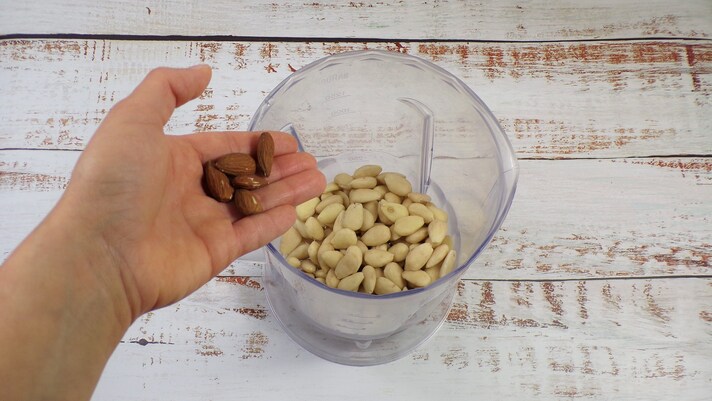
Add the bitter almonds.
Add the bitter almonds.
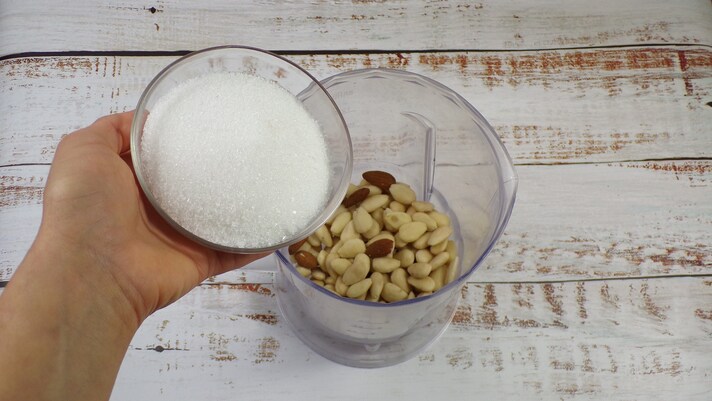
Pour the granulated sugar and reduce everything to a flour.
Pour the granulated sugar and reduce everything to a flour.
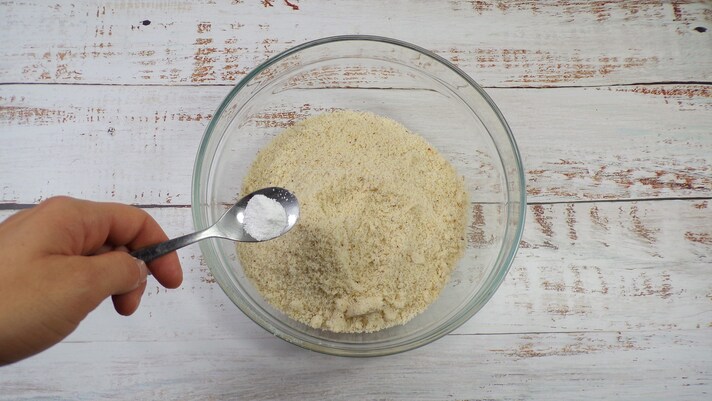
Transfer the sweetened almond flour to a large bowl and add the baking ammonia.
Transfer the sweetened almond flour to a large bowl and add the baking ammonia.

Pour the egg whites, cold from the fridge.
Pour the egg whites, cold from the fridge.
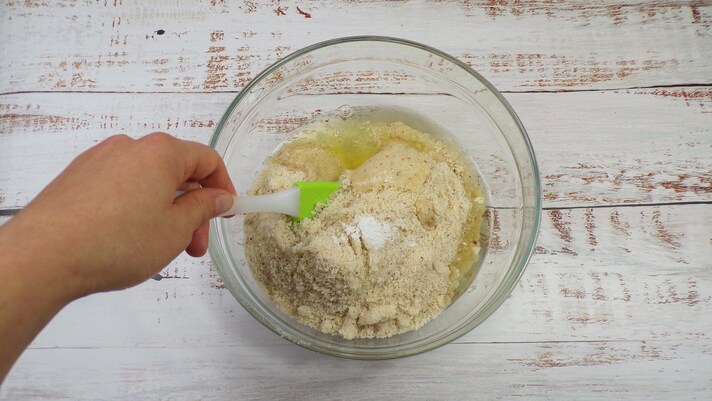
Incorporate the egg whites with a spatula.
Incorporate the egg whites with a spatula.
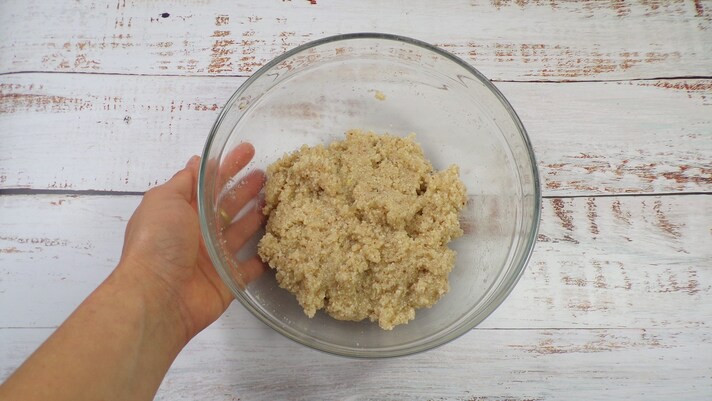
Work it again until you get a smooth mixture.
Work it again until you get a smooth mixture.
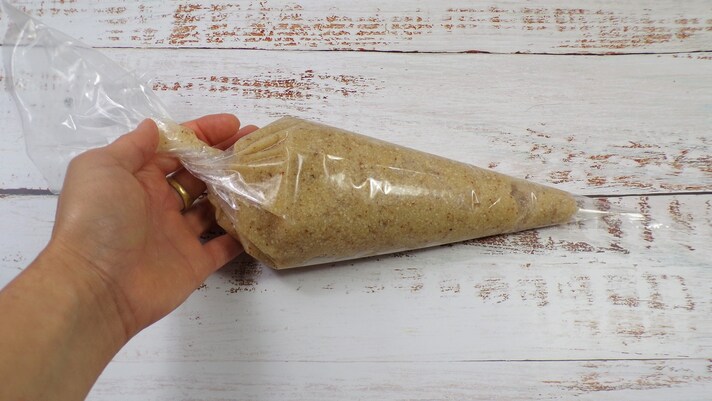
Transfer the resulting mixture into a piping bag and put it in the fridge for about 20 minutes. If you don't have a piping bag, you can collect the dough in a bowl and let it rest in the fridge for a few hours, or until it becomes compact and easily moldable.
Transfer the resulting mixture into a piping bag and put it in the fridge for about 20 minutes. If you don't have a piping bag, you can collect the dough in a bowl and let it rest in the fridge for a few hours, or until it becomes compact and easily moldable.

Once the resting time has elapsed, lightly grease a baking tray and cover it with baking paper (this way it won't move when it's time to form the amaretti); then make lots of balls the size of a walnut, spacing them well apart from each other.
Once the resting time has elapsed, lightly grease a baking tray and cover it with baking paper (this way it won't move when it's time to form the amaretti); then make lots of balls the size of a walnut, spacing them well apart from each other.
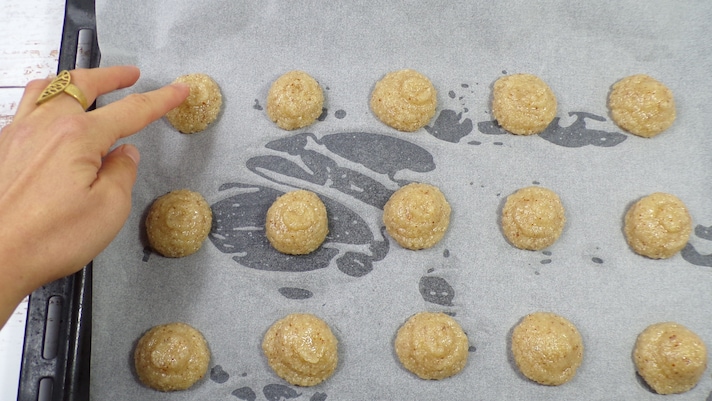
With slightly damp fingers, smooth the surface of each amaretto.
With slightly damp fingers, smooth the surface of each amaretto.

Sprinkle them with plenty of powdered sugar.
Sprinkle them with plenty of powdered sugar.

Place in a preheated oven at 350°F (175°C), in static mode, and leave the amaretti to cook for approximately 15 minutes; then take them out of the oven and let them cool completely on a rack.
Place in a preheated oven at 350°F (175°C), in static mode, and leave the amaretti to cook for approximately 15 minutes; then take them out of the oven and let them cool completely on a rack.

Enjoy!
Enjoy!
;Resize,width=767;)
